This was published 4 years ago
Kengo Kuma, the architect behind Tokyo's new and controversial Olympic National Stadium
By Anthony Dennis
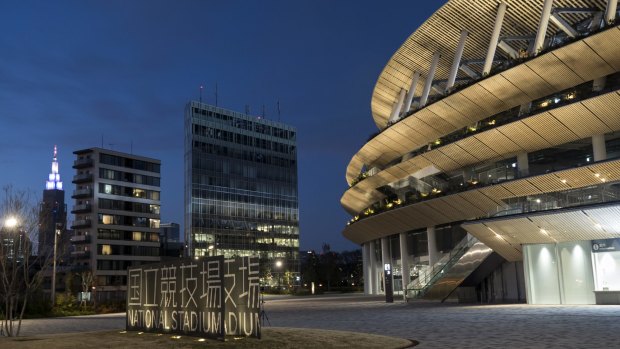
The New National Stadium, the main stadium for the upcoming Tokyo 2020 Olympic and Paralympic Games.Credit: Getty Images
A humble pineapple cake shop may, in architectural terms, be rather removed from an elaborate Olympic Stadium. But here in Tokyo, a city ever brimful of eccentricities and surprises, they're the work of the same man.
Kengo Kuma is Japan's architect of the moment and his building housing SunnyHills - the Tokyo home of a revered Taiwanese tropical fruit cake - could easily be mistaken for the headquarters of the Japanese chapter of the Pick Up Sticks Society.
Its façade is fashioned by an intricate latticework of timber beams arranged - seemingly haphazardly - around a largely hidden glass superstructure, with only the necessary amount of space allowed for an entrance.
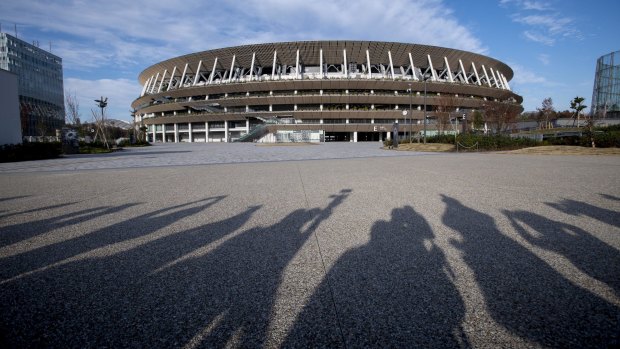
Th New National Stadium, the main stadium of Tokyo 2020 Olympics and Paralympics.Credit: Getty Images
It's just a whisker under 200 days to go before the opening ceremony of the Tokyo Olympics and I'm in Tokyo ostensibly to visit Kengo Kuma's new Japan National Stadium. But, intrigued by his work and the hype surrounding it, I've allowed time to go in search of more of his sharply diverse Tokyo works.
I've even managed to arrange a stay at the luxurious, Kuma-designed Capitol Tokyu Hotel in Akasaka with its arresting and unmistakably Japanese lobby and standalone, pavilion-like restaurant.
The original Capitol, one of Tokyo's most famous hotels and the accommodation of choice for the Beatles during their 1963 Japan tour, was demolished to make way for a modern 29-storey tower.
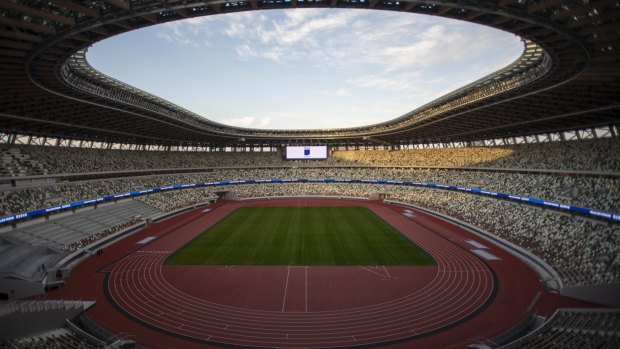
Vew of the New National Stadium, the main stadium of Tokyo 2020 Olympics and Paralympics/Credit: Getty Images
In keeping with his devotion to timber as a building material, Kuma's design of the hotel's lobby is infused with wood as a means of crafting a calm, elegant and distinctively Japanese environment for guests.
From SunnyHills, located in the chic Tokyo neighbourhood of Aoyama, the layer cake-like 2020 Olympic and Paralympic Stadium is a few kilometres stroll away with another of Kuma's works, the serene, privately-owned Nezu Museum just down the street.
This discreet museum is entered via a long path. On one side is a wall clad in bamboo stalks and on the other a thicket of living bamboo, all intended to unite the freneticism of the city with the serenity of a forest.
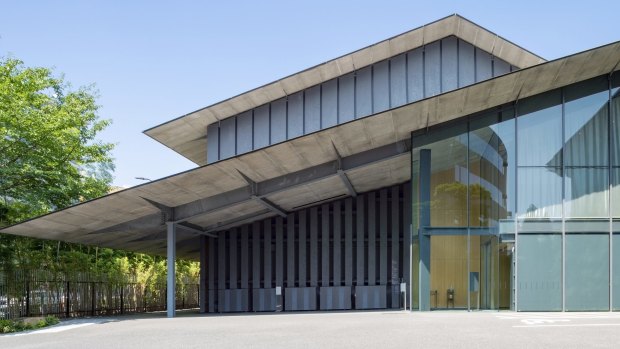
Nezu Museum is located in Minami-Aoyama, Minato-ku, Tokyo.
Beyond the museum's main lobby and gallery spaces reserved for ancient Japanese and Asian art, is one of Tokyo's secrets. Entirely concealed from street level is a tranquil undulating Japanese garden and teahouse.
The museum is a fine example of Kuma's determination to inject the inherent harshness of contemporary architecture with a semblance of nature, a kind of Japanese architectonic forest-bathing, if you will.
"His is an architecture that seems at first glance to exude tradition and 'Japan-ness'," the New York Times wrote in an assessment of his work last year, "but it turns out to be one of allusions, tricks of the eye and uncertain thresholds and limits. Surfaces mislead and deceive; materials are returned to again and again, like an obsession…"
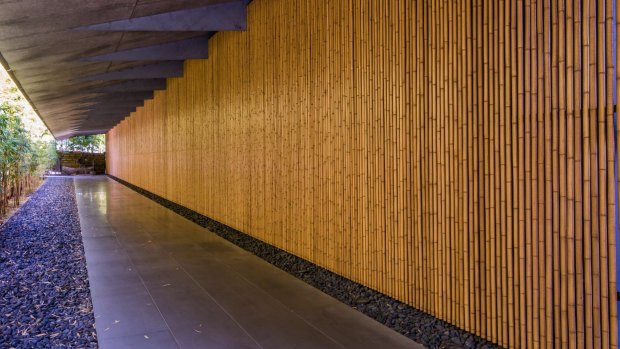
Bamboo Entrance to Nezu Museum.Credit: Getty Images
Indeed, such a preoccupation is on full display at Kuma's stadium, officially opened only last month, and by far the architect's highest profile project. Its creation and construction was no piece of pineapple cake, however, since he effectively won the right to design it by default following the sort of mammoth controversy only a polarising Olympic Games can engender.
The original stadium commissioned for the new national stadium was won by Zaha Hadid, the late Anglo-Iraqi architect, but after a public uproar over its extravagant cost, and the fact that the coveted project was awarded to a foreigner, Shinzo Abe, Japan's Prime Minister, was forced to overturn the decision in 2015.
Eventually, after another, rushed, competition, Kengo Kuma & Associates won the right to design and build the revised stadium on the site of the former 1964 facility, which would be demolished to make way for it.
The new 60,000-seat stadium is distinguished by its use of cedar and larch drawn from all of Japan's 47 prefectures, or provinces, as well as the abundant greenery that has been carefully planted around the edges of its various layers or tiers.
It's spectacular in a strangely, yes, Zen-like subdued way, wedged on a typically tiny Tokyo footprint between a residential and business area and rare parklands. Once the Games are over it's hoped that greenery-deprived Tokyoites, and visitors, will be able to access those vegetated outer walkways of the facility as a kind of vertical circular garden.
But with such a massive building located in a notoriously earthquake-prone country, there was only ever going to be so much timber that could be employed in its construction. Sturdy steel still dominates but in what amounts to a sleight of hand designed to soften the structure, sections of the beams supporting the massive roof are encased in timber with the seating below, a mix of earth greens, browns and whites.
It could be argued that Kuma is undiscriminating in the commissions he accepts for his firm – would Frank Gehry agree to design a cake shop?. His portfolio also perversely, at least from an Australian perspective, includes various Starbucks outlets.
These include a new one near the Nakameguro metro station, with its rows of chic shops lining either side of the canal-like Meguro River which is full of cherry blossoms in the spring.
Unlike in Australia, Starbucks is enormously popular in Japan. its latest four-level coffee temple, the biggest in the world, resembles at first glance the headquarters of some trendy religious cult.
It has proved so popular that patrons must retire to a sizeable waiting room where they're allocated a ticket in order to enter. Even then and even then they're not assured a table. But it's difficult to determine whether the customers have been drawn here by the stunning architecture and interiors or by the allure of a signature Starbucks whiskey barrel-aged cold brew.
Curiously, despite his fame in his homeland, Kuma, who will turn 66 towards the end of the Tokyo Olympics, has until recent years enjoyed relatively few overseas commissions. But with recently completed and well-received buildings in Scotland, Turkey and Australia, Kuma's reputation has risen as surely as the hoisted, national flag of a gold medal winner during a presentation ceremony.
Yet in his homeland, it's impossible to discern a pattern in the prolific work of Kengo Kuma despite, of course, the ubiquitous timber. Over a few days, in my canvassing of his work across Tokyo, I've found myself variously inside a cake shop, the next in a private museum, then ensconced in a super duper Starbucks and, of course, in and around the world's latest Olympic Stadium.
Yes, even here in his own city, Kengo Kuma's definitively Japanese, nature-infused architecture can be wonderfully worlds apart.
FIVE MORE GREAT KENGO KUMA BUILDINGS
V & A MUSEUM, DUNDEE, SCOTLAND
Scotland's first dedicated design museum and the only other V&A museum outside of London, Kuma's striking convict hulk-like building has helped elevate the profile of a lesser-visited Scottish city as well as enhancing his own international reputation. See vam.ac.uk
ODUNPAZARI MODERN MUSEUM, ESKISEHIR, TURKEY
This Kengo Kuma-designed museum in north-west Turkey is formed by a cluster of boxes comprising a network of interlocking wooden beams. For a wood-loving architect, the project perfect platform as Odunpazari , a former centre for timber trading. See omm.art/en
THE BAMBOO WALL HOUSE, COMMUNE BY THE GREAT WALL, CHINA
Commune by the Great Wall is an ambitious hotel-cum-resort project designed to showcase the talents of 12 leading Asian architects. One of the buildings is Kuma's Bamboo House villa, an early expression of the Japanese's love of natural materials. See commune.sohochina.com/en
THE EXCHANGE DARLING SQUARE, SYDNEY, AUSTRALIA
Kuma's bold hive-like building stands six storeys high and is wrapped in 20 kilometres of sustainably-sourced, hi-tech timber. The building serves as the new home of the City of Sydney Library as well as fashionable restaurants and even a childcare facility. See darlingsq.com
JAPANESE GARDEN CULTURAL VILLAGE, PORTLAND, OREGON, US
Considered among the most authentic Japanese gardens outside of Japan itself, it's considered expansion in recent years includes a cultural village designed by Kuma with its collection of main buildings each featuring rustic "living" green, grassed roofs. See japanesegarden.org
TRIP NOTES
SEE
The 2020 Tokyo Olympics are on between July 20 and August 9 with the Tokyo 2020 Paralympics to follow between August 25 and September 6. SunnyHills Minami Aoyama Store is at 3 Chome-10-20 Minamiaoyama, Minato City, Tokyo. Nezu Museum is at 6 Chome-5-1 Minamiaoyama, Minato City. See sunnyhills.com.tw; tokyo2020.org; nezu-muse.or.jp; starbucksreserve.com
STAY
Doubles at the Capitol Tokyu Hotel start from JPY48,000. 2-10-3, Nagata-cho, Chiyoda-ku, Tokyo. Ph: +81-3-3503-0109 See tokyuhotelsjapan.com
FLY
Qantas operates regular services between Australia and Japan, including Tokyo from Sydney and Melbourne. From March 29, subject to approval, Qantas will be the first Australian airline to offer daily year-round flights from Melbourne to Tokyo's preferred Haneda Airport. See qantas.com
MORE
Anthony Dennis visited Tokyo as guest of the Japan National Tourism Organisation, Qantas and the Capitol Tokyu Hotel, Tokyo
Sign up for the Traveller Deals newsletter
Get exclusive travel deals delivered straight to your inbox. Sign up now.